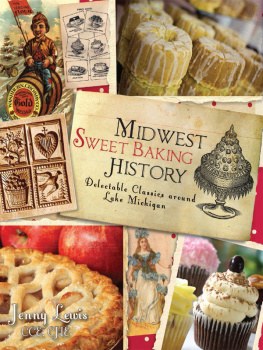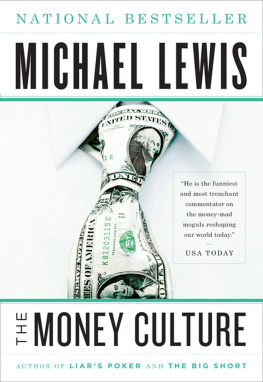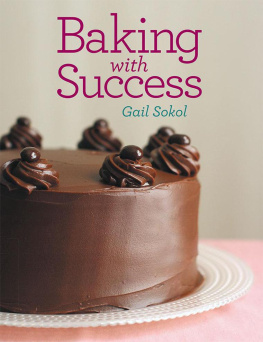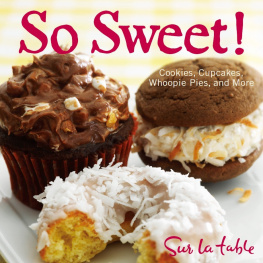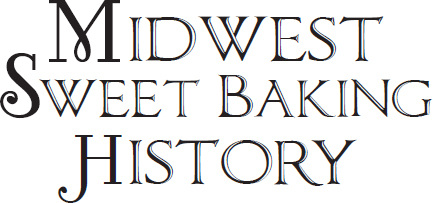

Published by The History Press
Charleston, SC 29403
www.historypress.net
Copyright 2011 by Jenny Lewis
All rights reserved
Cover images: Images are from the authors private collection, with the exception of the Washburn-Crosby Company advertisement from the late 1880s.
Cover design by Karleigh Hambrick.
First published 2011
e-book edition 2013
Manufactured in the United States
ISBN 978.1.62584.222.0
Library of Congress Cataloging-in-Publication Data
Lewis, Jenny.
Midwest sweet baking history : delectable classics around Lake Michigan / Jenny Lewis.
p. cm.
Includes bibliographical references and index.
print edition ISBN 978-1-60949-344-8
1. Baking. 2. Cooking--Michigan, Lake Region. 3. Cooking, American--Midwestern style. 4. Cookbooks. I. Title.
TX763.L486 2011
641.5977--dc23
2011043444
Notice: The information in this book is true and complete to the best of our knowledge. It is offered without guarantee on the part of the author or The History Press. The author and The History Press disclaim all liability in connection with the use of this book.
All rights reserved. No part of this book may be reproduced or transmitted in any form whatsoever without prior written permission from the publisher except in the case of brief quotations embodied in critical articles and reviews.
CONTENTS
FOREWORD
The American experience is laden with foods both surprising and clever, especially from strapped or mundane circumstances. Legends of gold miners sleeping on pillowed saddlebags, diligently cradling their sourdough starters beneath them for the next days breakfast (Silver Dollar Pancakes), of a bread named for a woman who fed her husband nothing but molasses and cornmeal all day (Anadama/Anna Damn Her!) and of mock-custard pie so good that flies were attracted in droves (Shoo-Fly Pie) all conjure foods that seem to wink and smile at usor at least promise a good story.
Immigrants and Americans have crisscrossed the United States so rapidly, with on-the-spot adaptations of old food traditions and clever ideas, many have been able to provide an income and future for their children in starting businesses from the ground up. The breathtaking speed with which we have filled our national table tells the tale of endless acres of farms speedily harvested. Our foodways have become fast, so much so that it is a unique style of eating, our truly American heritage. Fast food in the United States carried the charm of a fast life. Our personal memories of fast food might be framed by a car window through which food arrived neatly wrapped before we sped away to newer and more novel experiences day after day. Every colorful meal implied a gift or an occasion, and we peered into the folds of paper expectantly. But one of the biggest accomplishments of the great industrial food system was that there was no surprise. The food looked identical each and every time.
One can drive past ghost foodways left behind by the prominence of the fast-food industry in the middle states, such as the railroad lines crowding toward the historic Chicago Union Stockyards, now dusty and bare, the crowds of animals in 2,300 pens nearly forgotten. Nine million animals were butchered on the site yearly, which satisfied 80 percent of Americas overall meat consumption. Today, the only remnant of the stockyards is a huge gate crowned with the head of Sherman, a prize-winning bull that once overlooked the animals teeming below. The surrounding neighborhood seems incongruous, unsurethere may be ghosts of cattle running the streets at night. But the allure lives on; the name is a Chicago original, and many young artists are renovating factories in the district. Their start-up businesses proudly state a location in Chicagos Back of the Yards neighborhood, as if to resurrect it. And today, just down Halsted Street, chefs are shaping a smaller, less industrial foodwaytheir local restaurants have begun growing their own produce on rooftops and making their own cheese.
Today, we seek chefs who promise us foods that heal the land. Some cooks and chefs have the insights of social anthropologists, excavating and rediscovering the sanctity and meaning of food. In this style, Jenny Lewiss book traces authentic American middle state sweet baking, built out of ingredients and techniques from immigrants and entrepreneurs at their stoves.
Her book travels a luscious landscape; a vast array of indigenous ingredients is brought into the menu, from pecans to maple sugar and cranberries. Farmers, home bakers, ingredient companies and industrial bakeries are interwoven in relationships that speed up and bring forth exciting and creative recipes and inventions. Innovations such as baking powder, beet sugar and evaporated milk are explained in the environment of history, with its wars, social shifts and politics.
This is a wonderful trail, and Jenny is a most generous, insightful host for the story of Midwest Sweet Baking History: Delectable Classics Around Lake Michigan.
Heidi Hedeker
MA/MSW
Pastry Chef Instructor
Kendall College, Chicago, Illinois
PREFACE
It is not so strange that I, someone with immigrant roots springing from the Irish famine of the 1840s, should have chosen a profession in food, nor that I would want to record the immigrant obsession with food and the future of America, satisfying a need in the history of food. Simultaneously, though, it is about satisfying our immigrant heart as the storyteller relates the energy, industry and imagination of Americans.
I am a fifth-generation Chicagoan, and yet I have only one remembered recipe from my Irish American family: Christmas Whiskey Cake. My Irish ancestors did not come here with a trunk full of recipes or a tin full of seeds for planting. Rather, they brought with them memories of hunger and dreams of fantasy cakes and sugarplums. Most especially, they carried with them hope in an emerging nation that would embrace many food traditions, religions and nationalities to become America, their sweet home.
My goal is to follow the path of the sweet-toothed Americans in the middle states by means of history, recipes and true stories. The history of sweet baking in America is a big story. I hope to take a small slice of that bigger story here in the middle states. I have specifically taken Lake Michigan as my centering point, collecting stories from the states that border it: Wisconsin, Illinois, Indiana and Michigan.
This specific landscape surrounding Lake Michigan in pioneer times was the land of prairie, forests and Native Americans. To the eye of the immigrant, its tangled vastness and possibilities were limitless. One could say that landscape dominates desire. But in this case, the wild landscape unleashed the energy and the will of the immigrants to convert wilderness to homestead.
Collecting the oral history of contemporary bakers, as well as people working with ingredients for sweet bakers, has been an honor. In reflecting on their own work, many of them fell into line with those early immigrants who had a story to tell, and they often told it through their work and their love of food, as well as recipes and ingredients.
ACKNOWLEDGEMENTS
My first thanks are to my family, for after all, they are my immigrant foodways. Afternoon tea with scones and shortbreads gave my palate a move in the direction for baking. Growing up in the states surrounding Lake Michigan, I never questioned the bountiful harvestsfruits, corn, berries and wheat. Vacations on back roads yielded roadside foods for salemaple syrup, pies, pasties, jams, jellies, doughnuts and more! Somehow food has always been in my life and on my mind, from grinding wheat for bread as a child to piping the cannoli at my first bakery job. Food symbolized happiness, sharing and the delight of meeting many new people.
Next page
